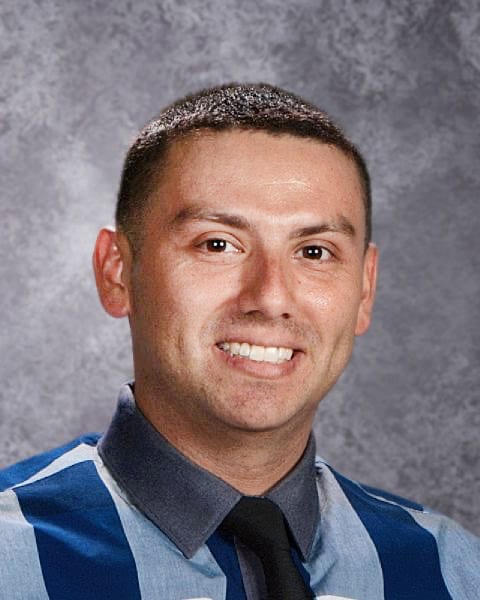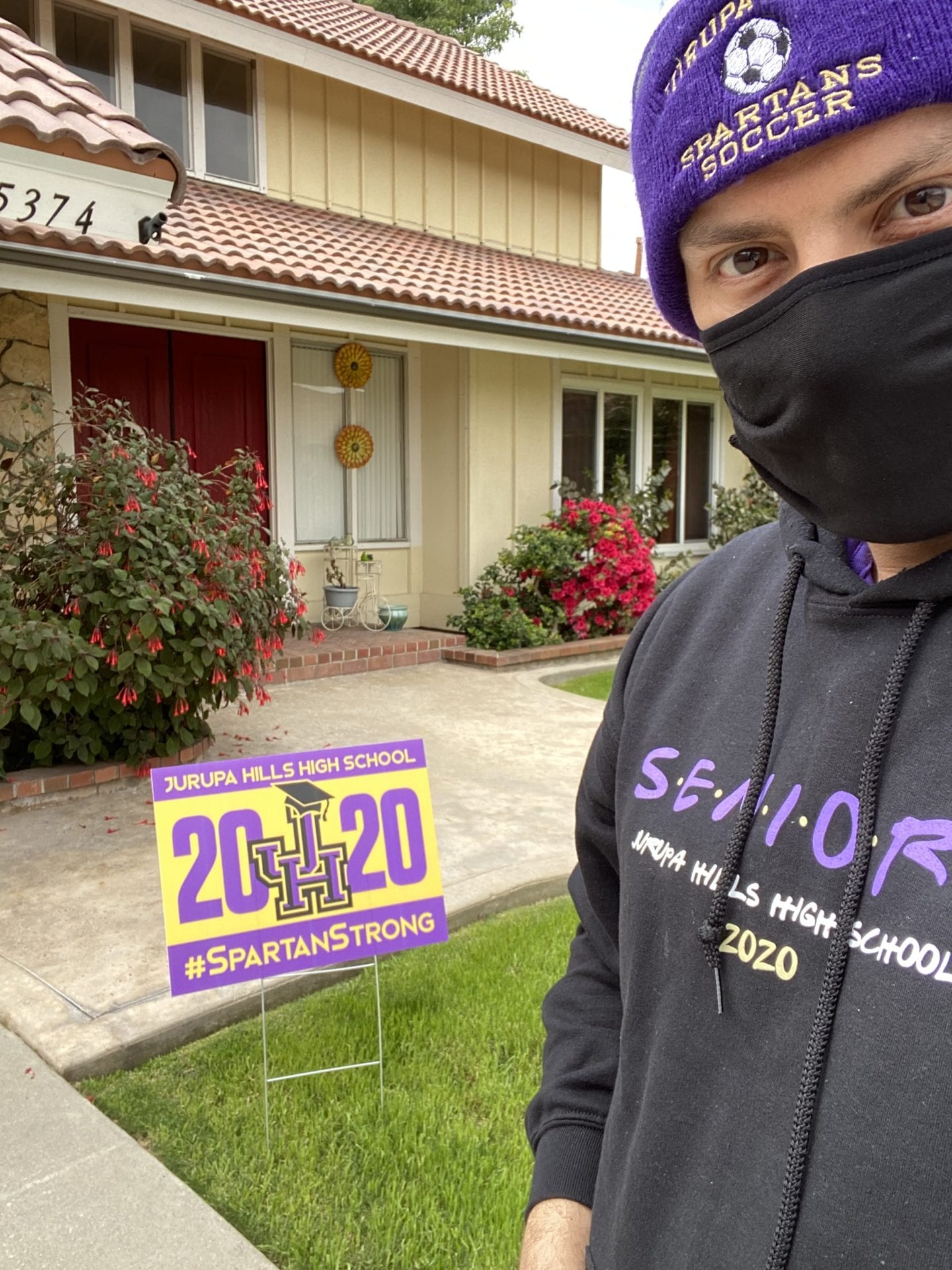Educators tell what it’s really like teaching in a pandemic
Teaching during normal times is challenging. It requires dedication, patience and knowledge — plus the ability to foster connections with students. It’s about being a role model and knowing when students need extra help, even if they don’t ask. It’s about fostering relationships with parents, building community, and more. This year was anything but normal. When COVID-19 closed schools, teachers rose to the challenge of taking their classrooms online and teaching from home. Some already knew how to teach online; others had a learning curve. Educators are indeed making history. The following snapshots highlight different experiences. Woven together, these stories create a tapestry, which may show future historians what it was like to teach during this extraordinary time.
Teaching in quarantine
Cecilia De La Torre
Fifth Grade Teacher at Paramount Elementary School, Azusa Educators Association
I didn’t tell my students my husband had COVID-19. I would have broken down. I didn’t want things to be centered on me. I wanted to be there for them. I let my 28 students know that I’m proud of them for joining me on Google Hangouts. Luckily, all my students have devices and connectivity.
My husband Jason works in a prison in Chino and is an assistant baseball coach at Azusa High School. When he tested positive, they told him to go home and quarantine away from me and our sons, who are in sixth grade and high school. He drove home, and I had 15 minutes to go into the master bedroom (with its own bathroom) and remove everything I would need for weeks. He went into the bedroom and stayed there. I opened the door 6 inches only to bring food. He used paper plates and plastic utensils. We texted or Facetimed to communicate. He had fever and chills, but wasn’t coughing much.


“Teaching in a pandemic makes you feel humble and courageous.”
My boys and I were also in quarantine. Our friends and family shopped for us. The Azusa Educators Association and my principal, Antonio Flores, were extremely supportive.
After a few weeks, my husband was doing better. He came out of the bedroom. But then he developed shortness of breath. He went to the hospital and then into the intensive care unit,
because he developed pneumonia and blood clots related to COVID-19. We couldn’t visit. He finally recovered and came home. Honestly, we have so much to be grateful for. My sons and I have no symptoms, and doctors say there is no reason for us to be tested.
During all of this, I worked. I received training from my district on how to teach online when my husband was in the bedroom, and began teaching while he was hospitalized. Teaching became my outlet and a distraction from COVID-19. Then there was my “mom life” to make sure my kids were doing OK. I got my kids set up with Chromebooks for their classes. I teach at the dining room table, and they do schoolwork in their bedrooms.
I’m very organized, so I am able to handle all of this this. I am also pretty good with technology. Just show me what to do and I can do it. I was already using Google Classroom, and now use it to push out assignments and offer feedback.
Teaching in a pandemic makes you feel humble and courageous. I tell my students, “You are part of history. Your children and maybe your grandchildren will ask you about this. You say you are bored, but take it all in. You are awesome. All of us are awesome.”
An opportunity for growth
Kristin Zebe
SCIENCE TEACHER at Pioneer Middle School, Tustin Educators Association
I compare teaching in a pandemic to teaching in a tornado. Everything is whirling around you. You have to find a way to get all of the kids into a bunker and feeling safe, while not freaking out yourself. I must be a source of stability, because students can’t learn if they are stressed. I am stressed, but can’t show it.
I’ve been teaching 17 years, and it’s the most interesting year of my career. It sounds funny, but teaching under these circumstances forces me into flexibility and going outside my comfort zone. It helps that I have a strong classroom management style. The expectations I set earlier in the year have carried over into online teaching.


“It helps that I work with an incredible group of teachers and feel supported.”
My district is very tech-savvy. In my school, students were issued iPads to take home. We were ahead of the curve, but I had to learn some things from scratch, like how to hold Zoom meetings and online office hours. It helps that I work with an incredible group of teachers and feel supported. We work through problems together daily.
As a single mom, it has been challenging. Sometimes my second grade daughter and I have Zoom meetings at the same time. I make sure she’s able to do her schoolwork while I’m teaching. Sometimes, she needs me when I’m teaching or communicating with students and parents. The upside is that both of us are becoming more flexible and enjoying quality time. I think she has found newfound respect for me as a teacher, seeing how hard I’m working.
I miss school. But I think this pandemic has offered opportunities for social and emotional growth for myself, my family and my entire school community.
Inequities are more apparent
Bianca Shiu
Science Teacher at Elmhurst United Middle School, Oakland Education Association
I knew there is a lot of inequity among student populations, but the virus has made these inequities even more pronounced. Some students have a stable home life, like having their own room and internet so they can continue learning. Many of my students are struggling. A quarter of them don’t have an internet connection. One of my students is looking for a stable place to live. Another is babysitting her 11-month-old brother because her parents work. During a pandemic, poor families are working hard just to have their basic needs met, so they may have to prioritize other things over education.


“This has made me realize how important it is to help students become independent learners.”
I’ve been trying my best to support my students, but their needs are so high it’s something I can’t do alone. It’s overwhelming. A positive aspect is seeing staff in my school community — teachers, principals and others — pushing themselves continually to support students. Some OEA members have pledged portions of their stimulus checks to support undocumented families in the district. Seeing other people step up has motivated me to do the same. I have four classes — approximately 120 students — and the participation rate in online learning is between 15 percent and 35 percent, depending on the day. My district has given out Chromebooks to students who have internet, and has tried to mitigate some of the factors around the 25 percent of students who don’t. They have compiled paper packets. They are working to provide hot spots. I just got an email that our district has served its millionth meal to students.
I have Google Classroom, and had a great time on a Zoom meeting. It was the first time I’ve seen students face to face. One girl gave us a tour of the backyard garden she’s planting as a science project, which was cool.
This experience has made me realize how important it is to help students become independent learners, especially if we have to continue some distance learning in the fall.
Connecting through a screen
Natasha Jacobs
First Grade Teacher at King Elementary School, United Teachers of Richmond
I talk to my students on Zoom. I film myself teaching lessons on Seesaw. The other day I filmed a Number Talk where I spilled M&M’s on the table and said, “Wow! How many do you see? What color did you start with? Do you notice any groups of five you can start counting by first?” Students were asked to film themselves explaining these things.
I try to be silly and fun so they do not feel alone or scared. One student thought coronavirus was like a villain who could open his window or door, come in, and infect him.


“At times, it can be overwhelming, but I am very hopeful for the future.”
I teach in a low-income district. Out of 24 students, I have only connected to 15 of their parents. I don’t know how the other students are doing. I keep trying to reach out to them, but I don’t hear back. I worry about them a lot. I love my students so much.
I have great challenges trying to communicate with my Latino parents. My mother was from Panama, so I understand Spanish and speak a little to get by, but I am not fluent yet. I use a translation program to converse with my Latino parents to help them get online. Many parents have informed me that they do not have internet access at home. The school is trying to provide hot spots, and there is a long waiting list for hot spots.
I am collaborating with my other two first grade teachers, and we divvied up the workload to make it easier on ourselves. My job is doing the math and art portion; another is doing phonics and language arts; and another is doing science and writing. We are posting lessons to
our own classrooms and to each other’s, all while differentiating to meet students’ needs.
I am always working. I have headaches from so much computer screen time. I live alone, and it is somewhat isolating. I feel like I am in a time capsule looking at the outside world through the window of my apartment or my computer.
I wish I had known more about teaching with technology before this. There was so much to learn! At times, it can be overwhelming, but I am very hopeful for the future.
Hugo
A weird kind of feeling
Hugo Sierra
Math Teacher at Jurupa High School, Fontana Teachers Association
I thought it would be easier. My district gave out computers to students at the beginning of the semester. I thought technology would be implemented gradually. Then we were told on a Friday we were going online next Monday. I’m grateful because my students and I already knew what to do.
I miss the kids every day. On Tuesdays and Thursdays from 10:15 until 11:30 a.m. there are actual meetings through Microsoft Teams Online Classroom. I hear students, but I cannot see their faces, even though they can see mine. Our district blocks their faces due to privacy concerns, so I just see myself when I’m teaching. I feel like I’m teaching to myself. It’s lonely and a weird kind of feeling. I like to interact with them. Yesterday during class, I took my device into my backyard and showed them my chickens to offer my emotional support.


“I worry about my seniors. In a matter of days, they ceased to be high school students and entered adulthood.”
Hugo Sierra helped plant yard signs for graduating seniors at his school. “It was a way of letting them know we care.”
I always record my lessons just in case students have questions. If I’m going too fast, students can watch it again. Also, kids do math now at their own pace. I guess those are a few perks.
I worry about my seniors. Many of them have gotten jobs to help out at home. In a matter of days, they ceased to be high school students and entered adulthood. They are missing prom and other senior events. Because their grade can’t be lowered, a lot of them stopped coming to the online meetings — especially those who are not going to a four-year college. They are done. To them, it’s “Why bother?”
Our administration team purchased 450 signs that said “Spartan Strong, Class of 2020” and we planted them in seniors’ front yards. We waved at them from afar. It was a way of letting them know we care about them. It was a way to say goodbye.


Teaching side by side
Lisa Razo
Second Grade Teacher at Kelley Elementary School in Thermal, and Her Husband
Teaching in a pandemic is like nothing you ever anticipated. We’re learning. We’re trying hard and making it work. Some days it’s great. The next day feels like a failure. It’s very challenging. I don’t think anybody realizes how much effort we are putting into this. Teachers are using Webex, Google Classroom, Zoom and Class Dojo. However, at this point, I am only able to connect with about 30 percent of my students online. We keep trying.
The majority of my students are the children of farmworkers. Many are undocumented. They are working in the fields. Many of my students are babysat by older siblings.


“When school reopens, I’m going to spend more time building relationships with students. Teaching in a pandemic teaches you what really matters.”
Richard and Lisa Razo teach remotely, together.
I know this is a very difficult time for families, so I’m more concerned about my students’ survival and whether they are getting enough to eat than whether they are turning in lessons for me. The pandemic has changed my thinking.
When school reopens, I’m going to spend more time building relationships with students and getting to know them better as people, as opposed to just teaching them. I will still push and motivate them to succeed. But I’m going to be more loving, kinder, funnier and sillier. Teaching in a pandemic teaches you what really matters.


Richard Razo
English Teacher at Coachella Valley High School; Coachella Valley Teachers
It’s interesting having two teachers teaching in the same house. I see her singing to students, but I teach high school, so I’m not going to sing. Yesterday I sat on one side of the couch and she sat on the other. We were both working with students. I was answering questions and she was in a meeting on Webex. Fortunately, we get along well.
The pandemic has given me an insight into what my students know and do not know. Sometimes my students tell me they weren’t taught something when they were younger. Next year I will be able to say, “Don’t tell me that; you were taught that in second grade. I know this because I watched my wife teach it.”


There are so many growing pains. Our district has given one iPad to each family, so sharing can be extremely difficult for families with more than one child, which is most of our families. Reception in the desert can be spotty. Even some of our teachers are not able to be online. The district is offering a “hub” that students can set up at home, but many parents have not responded to the robocall that these are available.
I have learned that even though kids are constantly using technology, they only understand apps and social media. They are having a difficult time downloading essays, even though it’s a simple two-step process. When this is over, I will teach students how to use a computer correctly.